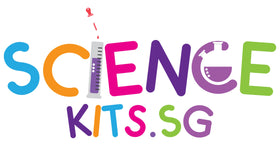
Engaging Middle School Minds: Creative Strategies for Teachers
Introduction:
Middle school is a time when students are curious, energetic, and eager to explore new ideas. However, it’s also an age where maintaining engagement can be challenging. Teachers need to be inventive in their approach to capture and sustain students' attention. This article will explore creative strategies that make learning enjoyable, interactive, and meaningful for middle school students.
1. Incorporate Inquiry-Based Learning:
Encourage students to ask questions and discover answers.
- Socratic Seminars: Engage students in critical thinking by having them discuss and debate questions related to a topic rather than simply receiving information.
- Student-Led Research: Allow students to choose their topics of interest, research independently or in groups, and present their findings creatively.
2. Integrate Technology and Digital Tools:
Leverage the tech-savvy nature of this generation.
- Interactive Learning Platforms: Use apps like Google Classroom, Nearpod, or Edmodo to provide dynamic lessons, quizzes, and polls.
- Multimedia Projects: Encourage students to create videos, podcasts, or digital presentations as part of their assignments.
3. Promote Collaborative Learning:
Foster teamwork and communication skills.
- Group Problem-Solving: Assign group tasks where students work together to solve real-world challenges, such as designing a sustainable community or brainstorming solutions to social issues.
- Peer Teaching: Pair students as “learning buddies” to teach and learn from each other. Peer-led activities can boost confidence and reinforce understanding.
4. Make Learning Hands-On:
Turn abstract concepts into tangible experiences.
- DIY Projects and Makerspaces: Set up a makerspace in the classroom where students can build models, conduct experiments, or prototype ideas using basic materials.
- Interactive Simulations: Use simulations and role-playing games to explore historical events, scientific phenomena, or ethical dilemmas.
5. Connect Lessons to Real-World Applications:
Bridge the gap between classroom content and everyday life.
- Current Events Integration: Relate subjects like history, geography, and science to current news, showing students how what they learn is relevant today.
- Guest Speakers and Field Trips: Invite industry professionals or take students on virtual or in-person field trips to bring lessons to life.
6. Encourage Creative Expression:
Give students opportunities to express themselves in unique ways.
- Art and Writing Integration: Blend creative arts into subjects like math and science by allowing students to create visual representations or write narratives related to the content.
- Choice Boards: Offer a range of project options that let students choose how they want to showcase their understanding—whether through a video, a written report, or an artistic piece.
7. Use Flexible Seating and Learning Environments:
Allow for movement and comfort to boost focus and creativity.
- Flexible Seating Options: Incorporate bean bags, standing desks, or floor seating to create a comfortable and dynamic classroom layout.
- Learning Stations: Set up stations around the room with different activities, allowing students to rotate and engage with content in various ways.
8. Celebrate Student Achievements:
Positive reinforcement and recognition can motivate students.
- Gamify Learning: Create a classroom leaderboard for achievements, badges, or certificates for progress in different subjects.
- Showcase Student Work: Display projects, essays, and artwork prominently in the classroom or share them online for the school community to see.
Conclusion:
Middle school students thrive when lessons are engaging, interactive, and relevant. By incorporating creative strategies, teachers can create a learning environment where students feel inspired, challenged, and excited to learn. With a focus on inquiry, collaboration, and real-world connections, educators can unlock the full potential of every student in their class.
